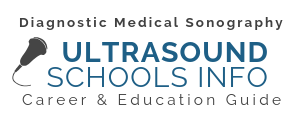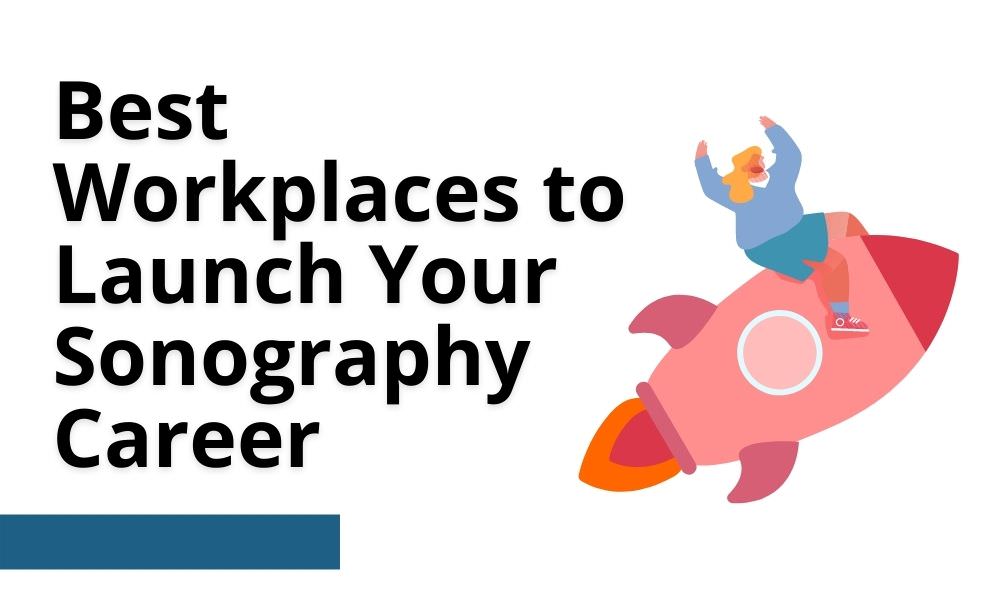What to expect as you transition from DMS student to the medical imaging workplace.
One of the best things about being a sonographer is the flexibility to have a rewarding career that helps others while also experiencing job stability. As much as you pour into patients and coworkers at your workplace you also should make sure your work environment will be nourishing to your own life, and working at a place that will fulfill what fits your needs. There are many avenues to give your career a direction to blossom into.
The purpose of this article is to detail some of the options of workplaces and the pros and cons of each to help sonographers be more informed on which workplace may be a good fit.
Some things to be considered are the hours worked, exams performed, workload expected, and patient populations.
This serves as a cursory overlook of a very few work environments open to sonographers. Please note these are in general and stereotypical of what is expected and there may be outliers, so an interview and asking questions should always be a default, variability from what was described is a definite possibility.
What Type of Facility Suits You Best?
Outpatient Facilities
Typically, patients visiting outpatient clinics received an order from a doctors’ office to have an ultrasound to check on lab values, and area of pain or area of concern. Patients are usually healthy enough to walk themselves in! This is a great benefit to sonographer’s ergonomics as they will be able to hold breaths, and roll as needed for better images. Also, patient BMI may be lower since they were able to transport themselves to the clinic, thus reducing strain on shoulder, arm and wrist for the tech.
As far as working hours expect the 9-5 with no holidays or weekends, typically no on-call either! Exams performed can be varied and broad, so asking the clinic specifically will give a better idea. Mostly, there won’t be the opportunity for interventional procedures so if you are squeamish to blood and bodily fluids this may be a good option for you. Downsides are exam times. Some clinics expect all exams to be done in 30 minutes, putting a strain on the sonographer to perform fast and at the mercy of late patients or under-filled bladders.
This could cause sonographer burnout and lesser quality of exams at the mercy of the time constraints. The outpatient center may also allow for last minute add-ons increasing sonographer stress and pressure to perform. Some places also pay by exam performed so the faster you can scan the more money you will make. Lastly, this position is largely self-reliant. You will not have a group of sonographers usually but instead be expected to run a room yourself, lending better to a more experienced sonographer.
Where do Most Sonographers Work?
| Industry | National Employment Levels |
|---|---|
| General Medical and Surgical Hospitals | 44,750 |
| Offices of Physicians | 15,110 |
| Medical and Diagnostic Labs | 8,330 |
| Outpatient Care Centers | 3,200 |
| Colleges and Universities | 750 |
General hospitals (smaller, larger, children, and OB/GYN)
–Smaller hospitals will facilitate a great environment for a slower pace. Variety of exams may be great but the chance to receive them may be few and far between. Meaning, sonographers may get the chance to perform many types of exams but because there are less people coming to smaller hospitals there will be the chance it could take longer to see more pathology.
Expect more leniency on times and more chance of downtime. Additionally, funding and staff for a smaller hospital will be less and the sonographers that do work may need to cover different hours to fill gaps. Call, holiday and weekend shifts should be expected. Patient population could be anything from walkie-talkies to very sick. But because the ultrasound team is smaller staff pool there is more chance for a family type environment.
–Trauma/large hospitals typically run at a faster pace. Usually, a high reliance on interventional procedures like paracentesis, thoracentesis, and biopsies. Expect a closer working relationship with radiologists and other doctors. You will be expected to perform at a high level and fast. Usually call, weekends and holidays will be included but possibility of switching is better since staff pool is larger. This is a great place to see pathology and grow fast and have teammates that can help you. Having a thick skin to deal with more emotional cases or extremely sick patients will be essential to success.
–Children’s hospitals are a good fit for those that have a lot of patience and a fast-scanning technique. Children require distraction and also don’t have the tolerance for a long exam, so it is important to be fast and accurate. The patient population is kids so you would feel like helping kids is important but understand that most of the time you are working closely with parents.
–OB/GYN specialty hospitals are important to have a tech that is truly passionate about women and babies, this needs to be interesting to the tech because it is repetitive examinations of female anatomy and baby scans. A rewarding field in that you get to celebrate alongside women, but there are also moments of great sadness. Branch offs of this may be the 3d/4d imaging clinics and gender reveals.
Find Your Best Work/Life Balance
It is essential to note that working in an environment that is suitable to meet your balance of work and life as well as fulfilling your purpose can be vital to your happiness with going to work every day. It is important in your field to feel the value of what can be done to help your patient population and that your work feels fresh enough to allow you to do your best and feel excited about going to provide diagnostic exams to help patients. Whatever road you choose, know that the beauty of ultrasound is everything builds and will only make you more well-rounded, honing your skill set and creating a building block to the next workplace you grow into. Take every opportunity and use it to the fullest! Happy scanning!
If you’d like to learn more about opportunities in sonography, check out some of our other inspiring interviews and articles:
- Anatomy & Physiology: A Student’s Perspective – Is an Anatomy & Physiology class in your future? Here’s some real life advice, from a fellow student who’s been there.
- An Interview With Sonographer Dr. Traci Fox EdD, RT(R), RDMS, RVT
- Why I Chose Diagnostic Medical Sonography – Join Sonography Student & Contributor Lynn on her journey as she pursues a 2nd career as a sonographer.


